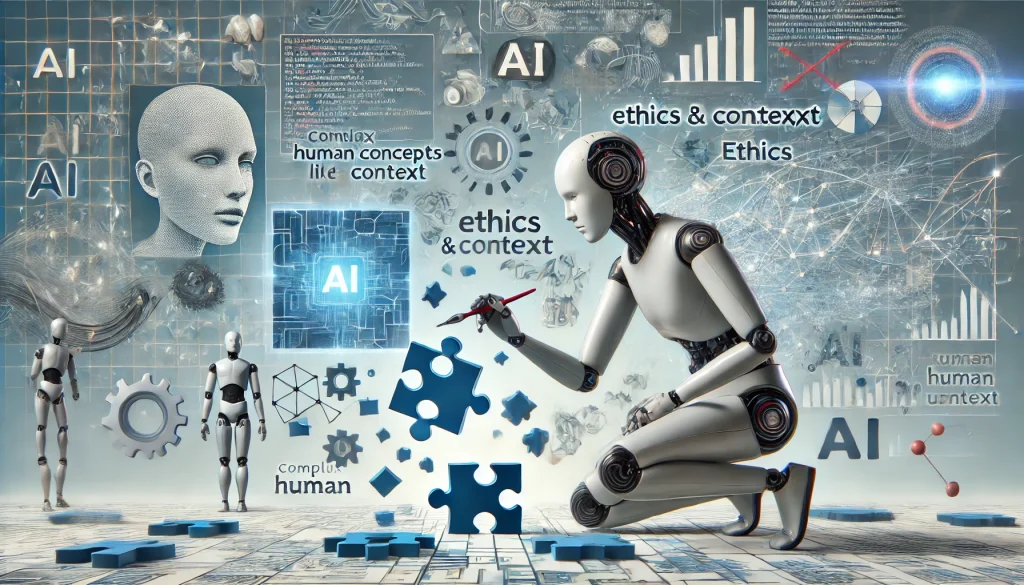Artificial Intelligence (AI) has made incredible strides in recent years, transforming industries, enhancing productivity, and opening up new possibilities. Yet, despite the hype and significant advancements, AI still has a long way to go before it can be considered truly “ready” for widespread, unfettered use. Recent insights, such as those discussed in the TechCrunch article “Why AI Can’t Spell Strawberry”, underscore some of the fundamental limitations that prevent AI from being fully reliable.
The Illusion of Intelligence
AI systems like OpenAI’s GPT models and other large language models (LLMs) are often perceived as being highly intelligent. They can generate text, answer questions, create art, and even engage in conversations that seem remarkably human. However, the illusion of intelligence can be misleading. These models are essentially sophisticated pattern recognizers, trained on vast amounts of data to predict the next word or phrase in a sequence. They do not “understand” the content in the way a human does; rather, they generate outputs based on statistical correlations in the data they’ve been trained on.
This lack of true understanding leads to problems when AI encounters tasks that require more than just pattern recognition. For example, in the TechCrunch article, it’s highlighted that AI models can struggle with tasks as simple as spelling the word “strawberry.” This example underscores that while AI can mimic human-like behavior, it lacks the depth of comprehension to reliably perform even basic tasks under certain conditions.
Context and Nuance: The Achilles’ Heel of AI
One of the major challenges AI faces is dealing with context and nuance. Human language is incredibly complex, filled with idioms, metaphors, cultural references, and subtle cues that require a deep understanding of context to interpret correctly. Current AI models, however, often fall short in these areas.
As the TechCrunch article points out, AI’s difficulties with something as straightforward as spelling reflect a broader issue: these systems are still prone to errors when context is critical. For instance, if an AI model encounters a word or phrase in a context it has not been explicitly trained on, it may make mistakes that no human would. This can be problematic in applications where precision is crucial, such as legal documents, medical diagnoses, or even just everyday communication.
The Limitations of Training Data
Another significant limitation of AI lies in the data it is trained on. AI models are only as good as the data they learn from, and if that data is incomplete, biased, or outdated, the AI’s outputs will reflect those shortcomings. In the case of large language models, the training data consists of vast amounts of text from the internet, books, and other sources. However, this data is not always representative of the specific contexts or tasks an AI might be used for.
Moreover, because AI models are trained on historical data, they can perpetuate and even exacerbate existing biases. This is particularly concerning in fields like hiring, law enforcement, and healthcare, where biased AI decisions can have significant real-world consequences. The article from TechCrunch emphasizes how these limitations manifest in everyday scenarios, illustrating that AI’s reliance on data can sometimes lead to glaring errors.
The Human-AI Collaboration Imperative
Given these limitations, it is clear that AI is not yet ready to operate independently in most contexts. Instead, the current best practice is to use AI as a tool that complements human decision-making rather than replaces it. Human oversight is crucial in catching errors, providing context, and making judgment calls that AI is simply not equipped to handle.
For instance, in fields like customer service, content generation, and even software development, AI can assist by handling routine tasks, generating drafts, or providing suggestions. However, a human should always review the AI’s output to ensure accuracy, appropriateness, and relevance. This collaborative approach leverages the strengths of both humans and AI, mitigating the risks associated with AI’s current limitations.
The Path Forward: More Than Just Data
To overcome these challenges, the development of AI needs to focus on more than just increasing the size of training datasets or enhancing computational power. Researchers are exploring ways to imbue AI with a better understanding of context, more sophisticated reasoning abilities, and improved generalization to handle unfamiliar situations. This involves not only technical advancements but also a more nuanced approach to training data, incorporating diverse perspectives, and reducing biases.
Additionally, ethical considerations must be at the forefront of AI development. Ensuring that AI systems are transparent, accountable, and fair is essential as they become more integrated into our daily lives. As the TechCrunch article suggests, AI’s inability to spell “strawberry” is a symptom of a broader issue that will require ongoing attention and innovation to resolve.
Final Thoughts
While AI has made remarkable progress, it is clear that it is not yet ready to fully replace human judgment or operate without oversight. The current limitations in understanding, context handling, and data dependency underscore the need for caution in deploying AI systems. By recognizing these challenges and continuing to refine AI technologies, we can work toward a future where AI complements human intelligence rather than attempting to mimic it—ensuring that we harness its potential while mitigating its risks.


